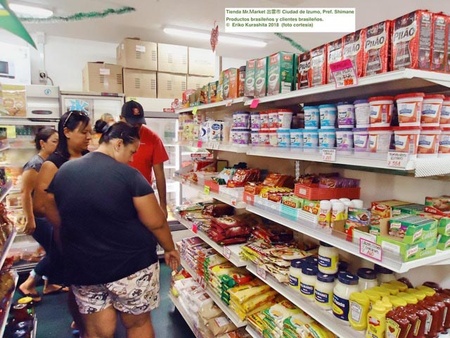A new immigration law will come into effect in April 2019. In addition to the existing "Technical Intern Training" residence status, a new "Specified Skilled Worker" visa will be introduced, and Japan is trying to accept 370,000 foreign workers over the next few years. Industries and departments with serious labor shortages are interested in this "Specified Skilled Worker" visa. This visa will extend the stay period from the current three years to five years, and if certain conditions are met, it will be possible to bring family members over from the sixth year, which is not currently permitted. Only foreigners from eight Asian countries that have agreements with Japan are eligible. The most notable thing about this legal reform is that it has essentially lifted the ban on obtaining visas for simple labor, which was previously prohibited in principle.
In the 1990 (Heisei 2) amendment to the Immigration Control Act, the major policy issue was resolving the labor shortage caused by the bubble economy, and the target was people of Japanese descent from Latin America and other countries. Since the amendment was limited to second and third generation Japanese and their families, as a result, Japan became the third largest Japanese community in the world1 .
Japanese people who came to Japan under this immigration law hold a residence status known as a "Japanese visa" based on blood ties. With this visa, it is relatively easy to obtain permanent residency, there are no restrictions on where they can work, and they are free to change jobs. Initially, many of them worked in factories in the automobile and electronics industries, but gradually more and more Japanese people began working in related industries, food processing, and the service sector, such as nursing care. In 2008, there were 390,000 Japanese workers residing in Japan.
However, due to the effects of the Lehman Shock and the Great East Japan Earthquake in 2011, the number dropped to 260,000 in 2012, and has now stabilized at around 240,000. Over the past few years, over 40% of Brazilians and nearly 20% of Peruvians in Japan have returned to their home countries. However, nearly 70% of Japanese-Peruvians who continue to live in Japan have already obtained permanent residency, and the number of those applying for naturalization is increasing.
Over the past 30 years, Japan's labor market has undergone various changes, and the number of foreign workers accepted has been adjusted accordingly. Changes have also been observed in the places where foreign workers live; initially, they tended to live in regional cities or their suburbs where various industries were located, but in recent years, it has become noticeable that they are relocating to urban areas where the service industry is concentrated.
The increase in the number of foreigners by prefecture from 2013 to 2017 is interesting. Kumamoto, Fukushima, Shimane, Saitama, and Kagoshima recorded an increase of around 30%, while Tokyo, Ehime, and Chiba recorded an increase of 25%. This increase is explained not by Japanese workers, but by technical intern trainees and international students from Asian countries. According to statistics from June 2018, there are 2.63 million foreigners residing in Japan, of which 2.2 million are from Asian countries (740,000 from China, 450,000 from South Korea, 290,000 from Vietnam, 260,000 from the Philippines, and 85,000 from Nepal), and only 250,000 from South American countries, including 190,000 Brazilians and 48,000 Peruvians.

Brazilians are concentrated in Oizumi Town and Ota City in Gunma Prefecture, Hamamatsu City, Kikugawa City, Iwata City, etc. in Shizuoka Prefecture, Toyota City, Toyohashi City, Komaki City, etc. in Aichi Prefecture, Minokamo City, Kani City, Gifu Prefecture, Suzuka City, Mie Prefecture, Aikawa Town and Ayase City, Tsurumi Ward and Hadano City in Kanagawa Prefecture. Among them, Oizumi Town and Hamamatsu City in Gunma Prefecture, which have various shops and services for the community and dispatch companies, are well known as representative Brazilian towns. Incidentally, Oizumi Town, which has a population of 20,000, is home to 7,500 foreigners (37%), of which 4,300 are Brazilians. This is probably the largest concentration of Brazilians in Japan.
Recently, the concentration of Brazilians has been increasing in Izumo City, Shimane Prefecture, which has a population of 170,000. Izumo City in Shimane is well known as the home of Izumo Taisha Shrine. Currently, there are 4,700 foreign residents in Izumo City, of which 3,429 are Brazilians2, and of these, nearly 2,000 have relocated in the past five years.
There are many other places where Japanese Brazilians live in large numbers, but what makes Izumo City's Brazilian population unique is that several thousand Brazilians work at the factories of Izumo Murata Manufacturing and its affiliated companies. This concentration of foreign residents in one company or its affiliated companies is unusual, and has been featured in several media outlets. Some of the articles have noted that Brazilians rate Izumo City highly for its living environment and good public safety, cheaper rent compared to the Tokyo metropolitan area, and educational environment for children. Most Brazilians have lived in Japan for many years, and few have immigrated to Japan in recent years. Izumo City has established administrative services for foreigners by utilizing the know-how of other municipalities, and seems to be responding well to the sudden population change.

Currently, many foreign workers can be seen all over Japan, but there is still a serious labor shortage in many industries, regional cities, and rural areas. For this reason, the Japanese government revised the Immigration Control Act last year. This revised law, which will come into effect in April 2019, is expected to increase the number of foreign workers entering the country on visas such as the Technical Intern Training Program and Specified Skills Program, but many problems have been pointed out. In fact, only foreigners from Asian countries with bilateral agreements with Japan can use these visas, 3 and workers entering the country on these visas are between 18 and 35 years old, most of whom are in their 20s. Furthermore, their average wages are only half that of current Japanese workers in South America. Most of these workers have been working in the workplaces where Japanese people have been working up until now, but Vietnamese, Nepalese, Filipinos, and Indonesians have already entered the country under the Technical Intern Training Program and are working. Because they are trainees, they are required to acquire skills while working, and the allowances (wages) paid to them are significantly lower than other foreigners and Japanese people. Since the actual take-home pay will be 100,000 yen or less, it will be very difficult for Japanese workers of similar nationality to maintain their previous wage levels. Even if there is a labor shortage, it is not certain that wages will rise in line with the supply-demand balance, and there is a high possibility that there will be excessive competition in the labor market for foreign workers.
Moreover, Asian workers who come to Japan on technical internship visas are limited to three to five years and come alone because they are not allowed to be accompanied by a spouse. However, they have a strong hunger for success and are true "migrant workers" who send as much of their limited income as possible back to their home countries to repay debts and cover living expenses. The number of migrant workers has already exceeded 250,000, and from April 2019, nearly 100,000 are scheduled to enter the country in a year. They also learn basic business terms in Japanese in their home countries, so they are tremendous competitors for Japanese workers.

Up until now, Japanese Brazilians have been the recipients of various forms of support, but in order to compete with Asian workers, they must now strengthen their Japanese language skills so that they can become more independent. Japanese Brazilians can stay with their families and set up homes in Japan, so they should make more efforts than ever before to educate their children. Also, while there are by no means only benefits to concentrating Japanese Brazilians in one place, it is true that they have learned a lot from living together for the past few decades, and I hope that these positive aspects will be utilized not only in Izumo City but also in other regions.
Notes:
1. In first place is Brazil with 1.8 million, followed by the United States with 1.1 million, and in third place is Japan, with 240,000 Japanese people living there, including 190,000 Brazilian nationals and 48,000 Peruvian nationals.
2. Although they only make up 2.7% of the population, the second largest group of foreigners residing in Izumo City are Chinese (309 people), meaning that there are more than 10 times as many Brazilians living there.
3. Organization for Technical Intern Training (OTIT)
Information is provided in multiple languages and a consultation desk is also available.
References:
- Eriko Kurashita, " Japanese Brazilians gather in Izumo, Shimane " (Nikkeiy Trendy Net, 2018.09.11)
- Statistics on foreign residents by the Ministry of Justice
-Izumo City Welcome Izumo " Portuguese version "
Shimane International Center/Foreigner Support Center
- Shimane no Hito, " Former JICA volunteer Keiko Kitani teaches Japanese to Brazilians, " Mainichi Shimbun local edition, August 12, 2017.
© 2019 Alberto J. Matsumoto





